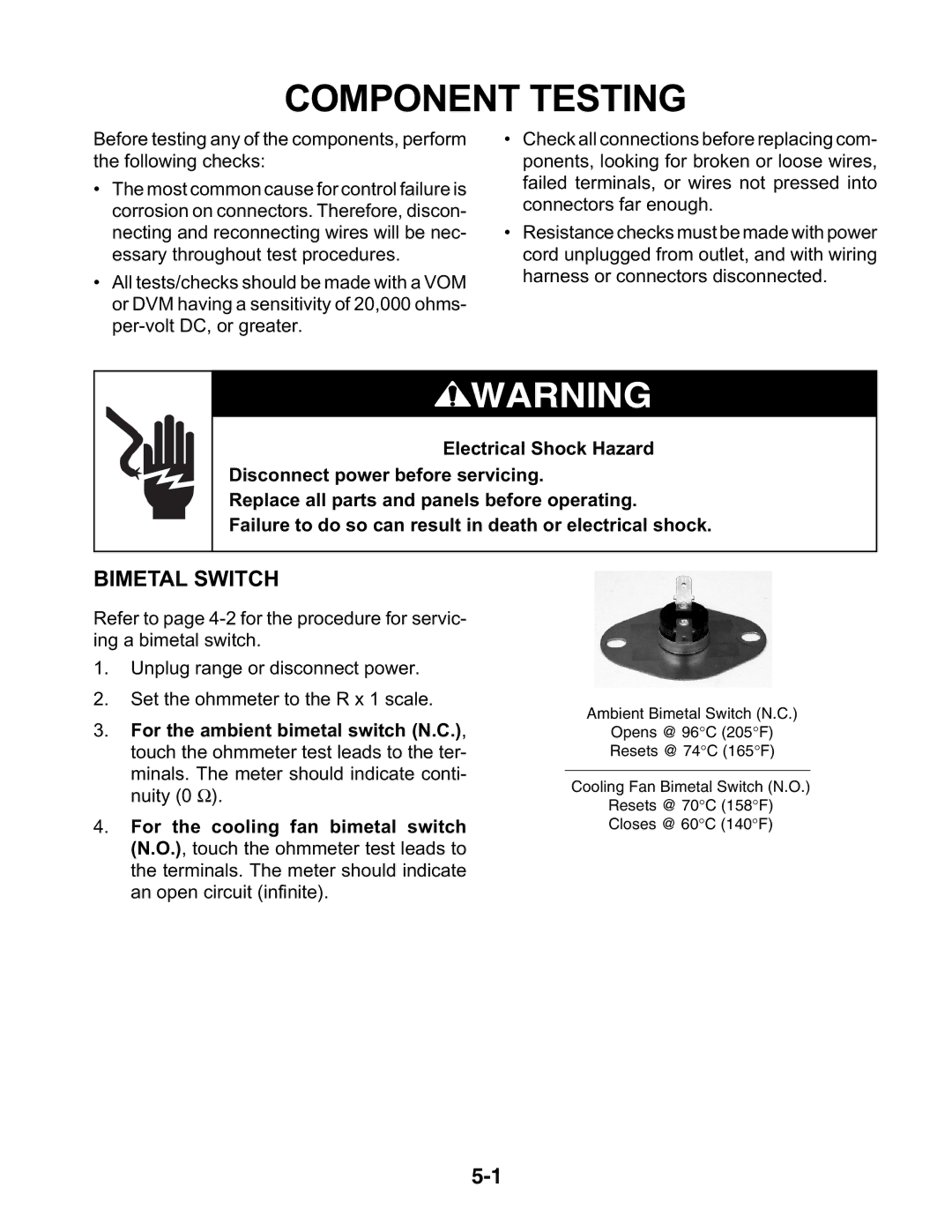
COMPONENT TESTING
Before testing any of the components, perform the following checks:
•The most common cause for control failure is corrosion on connectors. Therefore, discon- necting and reconnecting wires will be nec- essary throughout test procedures.
•All tests/checks should be made with a VOM or DVM having a sensitivity of 20,000 ohms-
•Check all connections before replacing com- ponents, looking for broken or loose wires, failed terminals, or wires not pressed into connectors far enough.
•Resistance checks must be made with power cord unplugged from outlet, and with wiring harness or connectors disconnected.
![]() WARNING
WARNING
Electrical Shock Hazard
Disconnect power before servicing.
Replace all parts and panels before operating.
Failure to do so can result in death or electrical shock.
BIMETAL SWITCH
Refer to page
1.Unplug range or disconnect power.
2.Set the ohmmeter to the R x 1 scale.
3.For the ambient bimetal switch (N.C.), touch the ohmmeter test leads to the ter-
minals. The meter should indicate conti- nuity (0 Ω).
4.For the cooling fan bimetal switch (N.O.), touch the ohmmeter test leads to the terminals. The meter should indicate an open circuit (infinite).
Ambient Bimetal Switch (N.C.)
Opens @ 96°C (205°F)
Resets @ 74°C (165°F)
Cooling Fan Bimetal Switch (N.O.)
Resets @ 70°C (158°F)
Closes @ 60°C (140°F)
